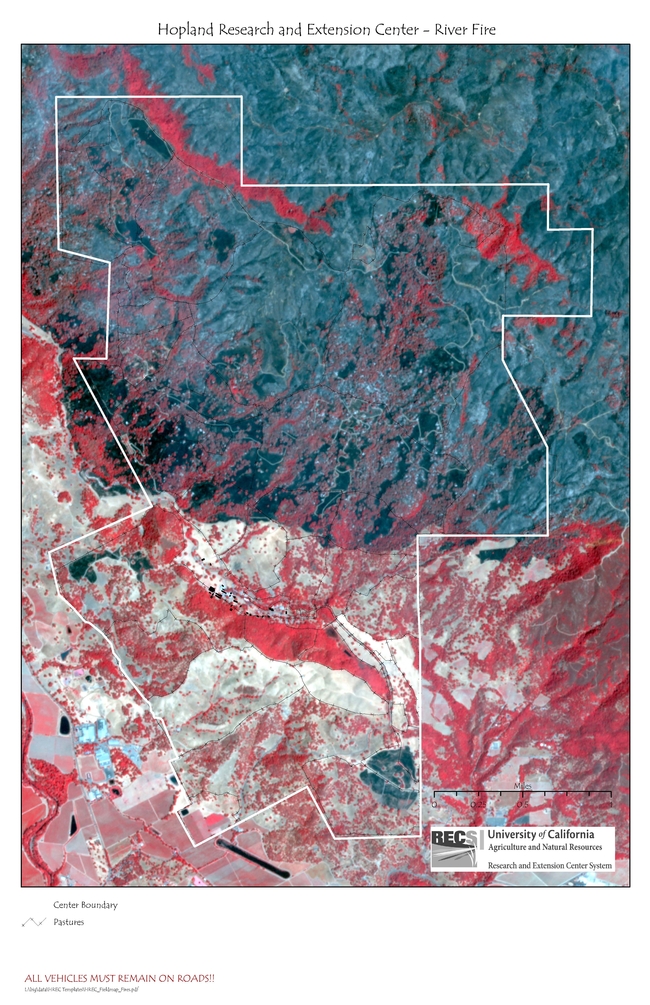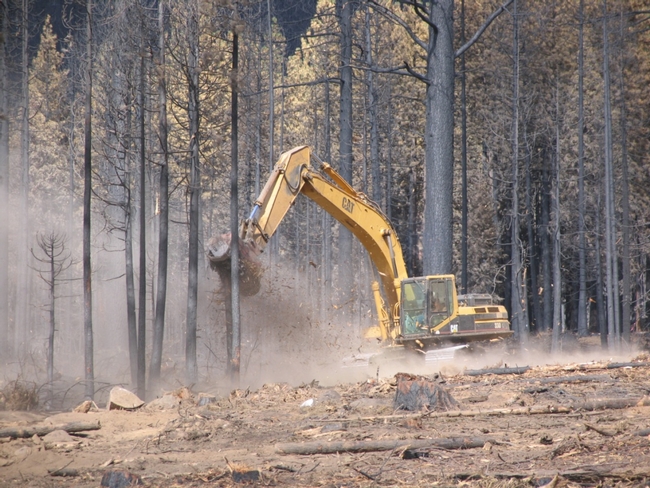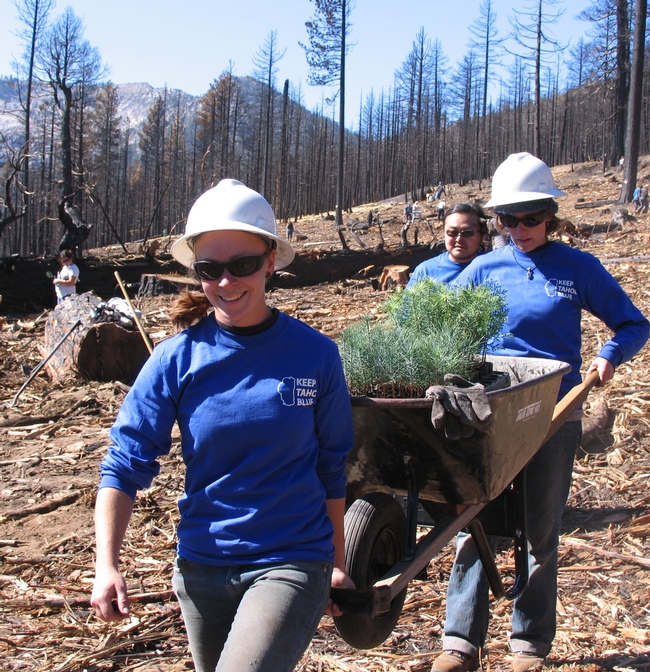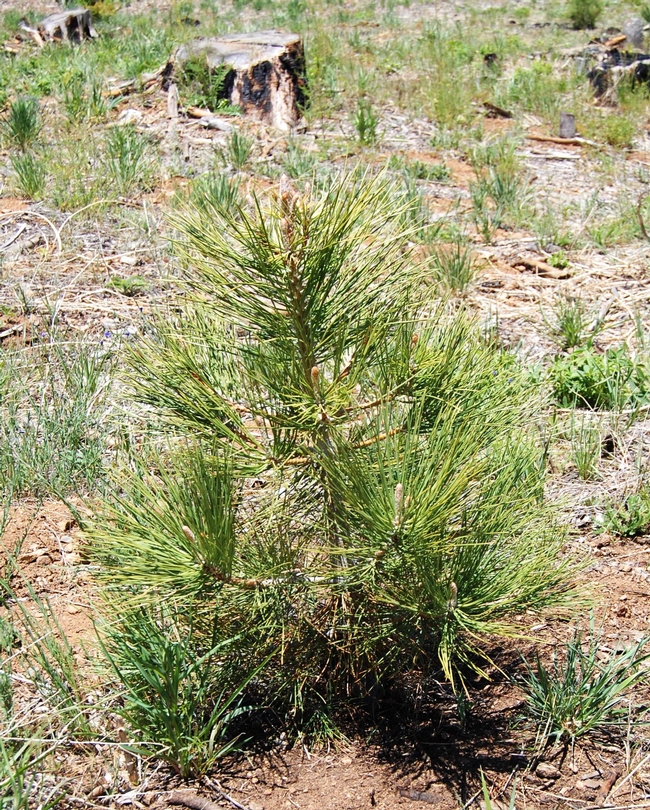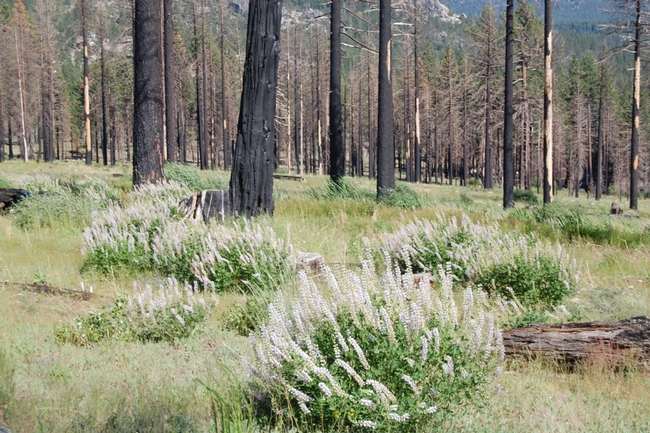
Posts Tagged: post-fire
URGENT: Post Fire Research Opportunities at Hopland REC
HREC and Post-Fire Research Opportunities
What is HREC?
The UC Hopland Research & Extension Center (HREC) is a multi-disciplinary research and education facility in Mendocino County located in the foothills of the Coast Range about two hours north of Berkeley. As part of the UC system for over 65 years, we are stewards of more than 5,300 acres of oak woodland, grassland, chaparral, and riparian environments. Elevation at the center ranges from 500 ft to 3,000 ft. HREC currently maintains a research flock of about 500 breeding ewes that have been the subjects of numerous studies on ranching practices, range management, livestock nutrition, wool production and breeding. Field experiments and demonstrations conducted here since 1951 have led to more than 1,500 publications in animal science, entomology, plant ecology, public health, watershed management, and wildlife biology. Our website is hrec.ucanr.edu.
The River Fire
As part of the Mendocino Complex fire, the River Fire burned through HREC on the evening of July 27 and into July 28. Approximately 3,000 acres of our center burned in this fire. Due to the concentrated efforts of Center staff and Cal Fire crews, all of our employees, residents, sheep, livestock dogs, offices and residences were saved. Below please find the burn map of our property. All of the black area to the north was burned and the dark red patches were areas of vegetation that remained unburned. The fire intensity varied greatly as did oak survival. You will see two smaller burned areas in the southern part of the property that were prescribed burns performed in June of this year.
Research Opportunities
While this was a blow to current research, pastures, and water infrastructure, we also see this as a wonderful opportunity. Due to extensive historical data sets and ongoing research projects, coupled with a variety of grazed and ungrazed pastures, and prescribed burn plots for comparison with wildfire, there is enormous potential for pre- and post-fire studies in the fields of:
- Watersheds and hydrology; fire science; plant science; soil science; entomology and parasitology; wildlife and wildlife ecology; rangeland management; grazing practices as fire suppression…..
To support this research, HREC offers:
- A well maintained network of roads that accesses almost all parts of the property, vehicles to use.
- A fully equipped shop staffed by employees skilled in fabrication and repair of research equipment
o Electrical, wood working, welding and metal fabrication, mechanical
- Skilled staff trained in field work techniques, with long histories of successful research support
- Fiber optic internet with Wi-Fi access throughout headquarters, strong cell service in most areas
- A vault of raw data, photos, and final papers from research conducted at HREC.
- Warehouses for storing equipment, a variety of accommodations from dorms to private houses
- Wet and dry lab space (undergoing renovation during fall 2018, available spring 2019)
- Lysimeter with available watering system, electrical connections, and fiber optic access point
- A research flock of sheep consisting of just under 500 breeding ewes, with all needed facilities and RFID tracking
- Fenced pastures and biological reserve areas for different treatment plots and controls
- A fully equipped conference facility with A/V equipment and fiber optic connections
Next Steps
- Zoom meeting on September 7th, 10am. More in depth information, Q&A.
- Field day on October 19th, 10am-5pm. Presentations, brainstorming, Q&A, site tours, available accommodations
- To register for either event follow this link: http://ucanr.edu/survey/survey.cfm?surveynumber=25451
Contact: HREC Interim Director John Bailey, jtbailey@ucanr.edu, (707) 744-1424 x 112
Forest lands may benefit from active restoration after wildfire

For high severity burns where very few or no live trees remain to provide seed for the next generation, forest recovery can take a very long time. Typically forest landowners want to restore their lands to a forested condition as quickly as possible. In that case, an active approach can help them reach their goal sooner.
The California Tahoe Conservancy has just released a report on the outcomes of active restoration of 40 acres of Conservancy lands where all trees were killed by the 2007 Angora fire in South Lake Tahoe. That fire burned 3,100 forested acres as well as 250 homes.

The report's authors estimate this active approach has hastened the return to a forested condition in the area by about 60 years. This is because planted seedlings are growing quickly while there are few naturally sprouting tree seedlings in adjacent untreated areas and these face competition from vigorously growing native brush that was stimulated by the wildfire. Soil monitoring showed no compaction by heavy equipment during tree removal and minimal soil erosion. Woody mulch left on site was also effective at suppressing brush to give newly planted tree seedlings a competitive edge.
Landowners looking for guidance on post-fire forest management are encouraged to download the free UC Cooperative Extension publication “Recovering from Wildfire: A Guide for California Landowners” and consult the UC Center for Forest Research and Outreach website at http://ucanr.edu/forestry.

